Seaplane pilots around the world recognize Jon Brown, even if only by name.
For the last 45 years, he has taught at Jack Brown’s Seaplane Base, in Winter Haven, Florida. Jon has given more than 18,000 check rides and logged over 28,000 flight hours, about 19,000 of them in Piper J-3 Cubs.
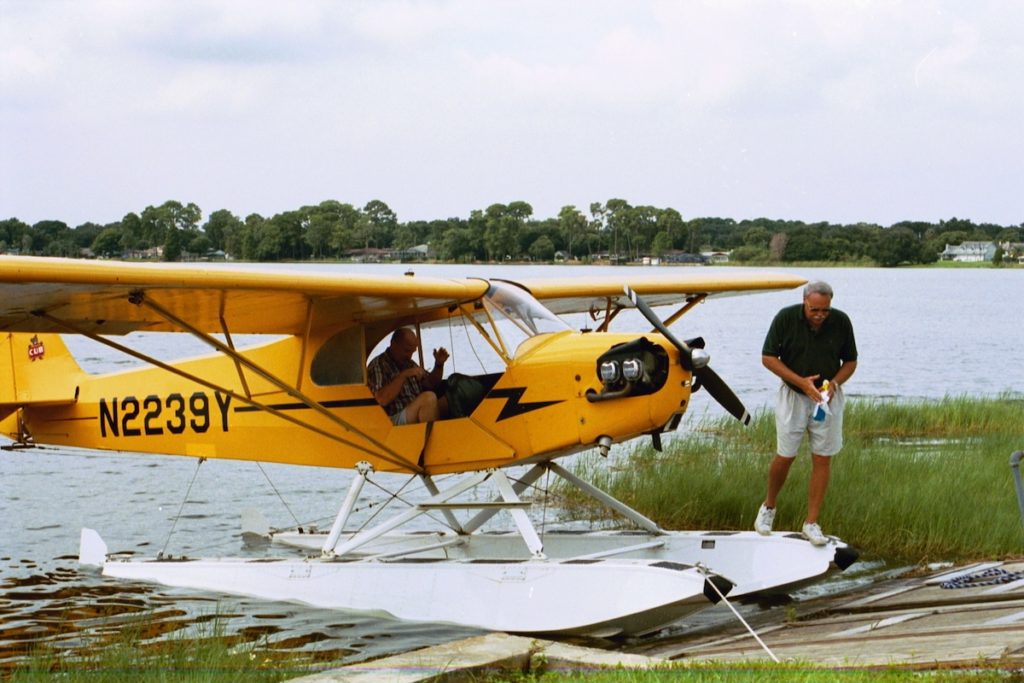
Jon prepares to fly with a student at Jack Brown’s Seaplane Base in Winter Haven, Florida. (Photo by Joni M. Fisher.)
Jon’s love of aviation began with his father Jack, who founded the seaplane base in 1963. At 6, Jon took his first flight with his father. By 12, he worked as a line boy for rides. By 14, he started his flying lessons. At 16, he earned his pilot’s certificate, then his seaplane rating at 18.
After Jon graduated from his beloved University of Tennessee in 1970, he returned to teach at his father’s seaplane base to build up hours to become a commercial airline pilot. That goal was detoured in 1975 when his father died in an accident when an elevator pin broke while he was ferrying a Piper Cub to North Carolina. Driven by a love for his father and aviation, Jon decided to continue his father’s business, along with his younger brother Chuck.
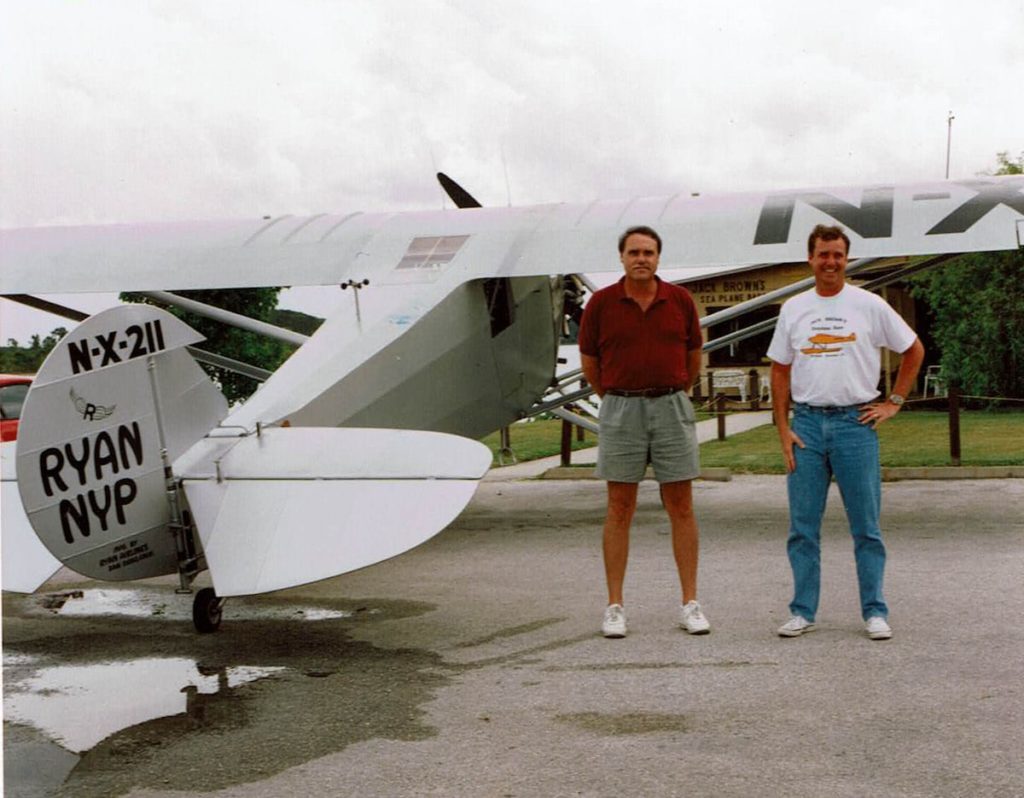
Jon Brown and his younger brother Chuck are both Designated Pilot Examiners. This photo was taken in the 1980s. (Photo courtesy of the Brown family.)
Just weeks after his father’s death, Jon became a Designated Pilot Examiner. After Chuck decided to fly corporate jets, Jon bought out Chuck’s share of the base. Chuck also became an examiner and helped at the base.
About 500 students a year train at Brown’s Seaplane Base. Jon has taught lawyers, Blackbird pilots, commercial airline pilots, French astronauts, plumbers, and celebrities like Jimmy Buffet and Alan Jackson, how to fly seaplanes. The Breitling Jet Team pilots, at the start of their first North American tour, took time out to fly seaplanes at Brown’s.
In October 2000, the Orlando FSDO gave Jon an award for promoting the Sea WINGS safety program in the United States. Obie S. Young, retired Safety Program Manager with the Orlando FSDO, said, “I know that every year Jon has somewhere around 50% of the Sea WINGS issued compared to the rest of the country.”
Young earned his seaplane rating from Jon’s father.
Setbacks
Performing thousands of hours of training naturally involves some risk. There have been a few accidents, like when Jon and a student on a check ride had an emergency landing in Lake Arietta in Auburndale in 1979 when a strut broke loose.
“Just backing down your driveway, if you do it 30,000 times, at some point you may hit the mailbox,” Jon notes.
In fact, one of his daughter’s dates did back into his brick mailbox, knocking it down.
After the 9/11 attacks, the FAA toughened the process for foreign students to get flight training in the US. The delays caused a slowdown in many popular flight training schools, including Brown’s, where 30% of the base’s training involves foreign pilots.
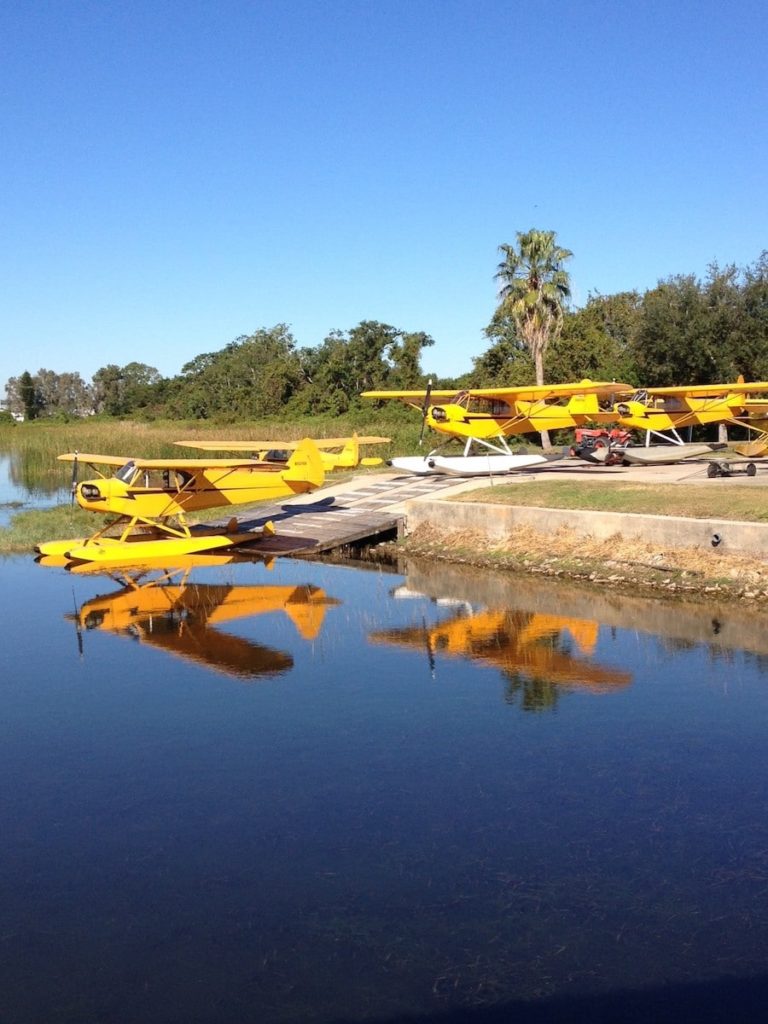
The school’s fleet of Cubs
And in Florida, there is the risk of the occasional hurricane. In 2004, Hurricane Frances tore the roof off the building. No planes were damaged, but for three months the school operated out of a tent on the tarmac.
Jon soldiered on, receiving the Wright Brothers Master Pilot Award at SUN ‘N FUN in 2015.
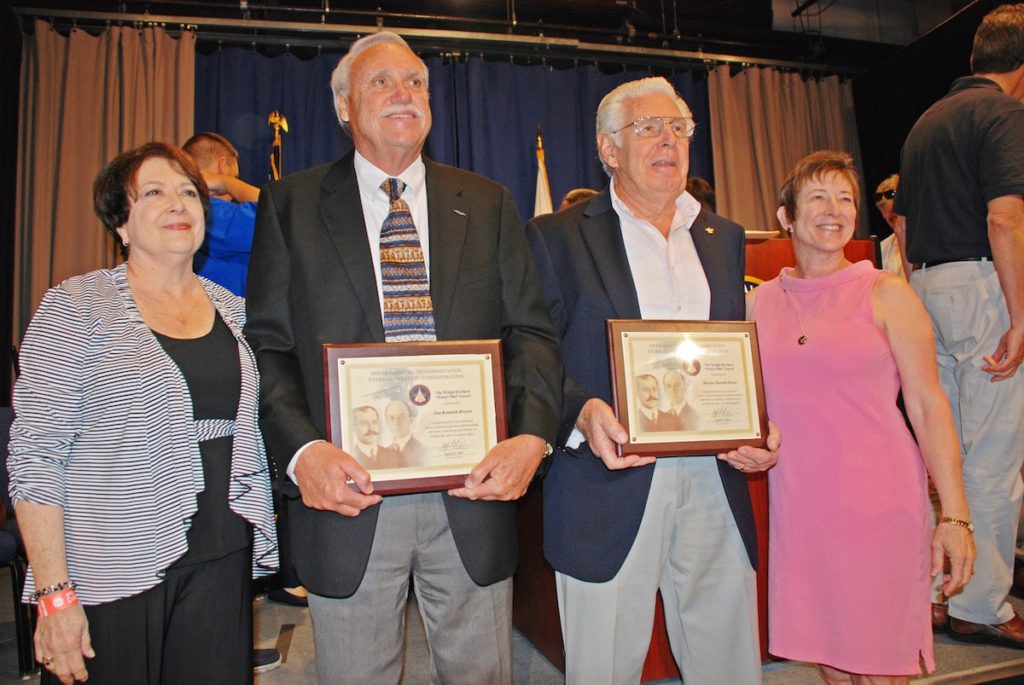
Jon Brown and his friend Burt Olson received the FAA’s Master Pilot Award in 2015. Shown here are Frances and Jon Brown with Burt and Sue Olson.
His success is due, in part, to the welcoming atmosphere at the base. Like migrating birds, students return season after season, especially during SUN ‘n FUN to gather in the screened porch for coffee, camaraderie, and storytelling.
Like his father, Jon tried to draw his children into aviation. His three daughters have chosen to teach, but not in aviation. His youngest daughter, Alison, married pilot and Brown’s Seaplane Base flight instructor Ben Shipps. They held their wedding at Fantasy of Flight in 2013.
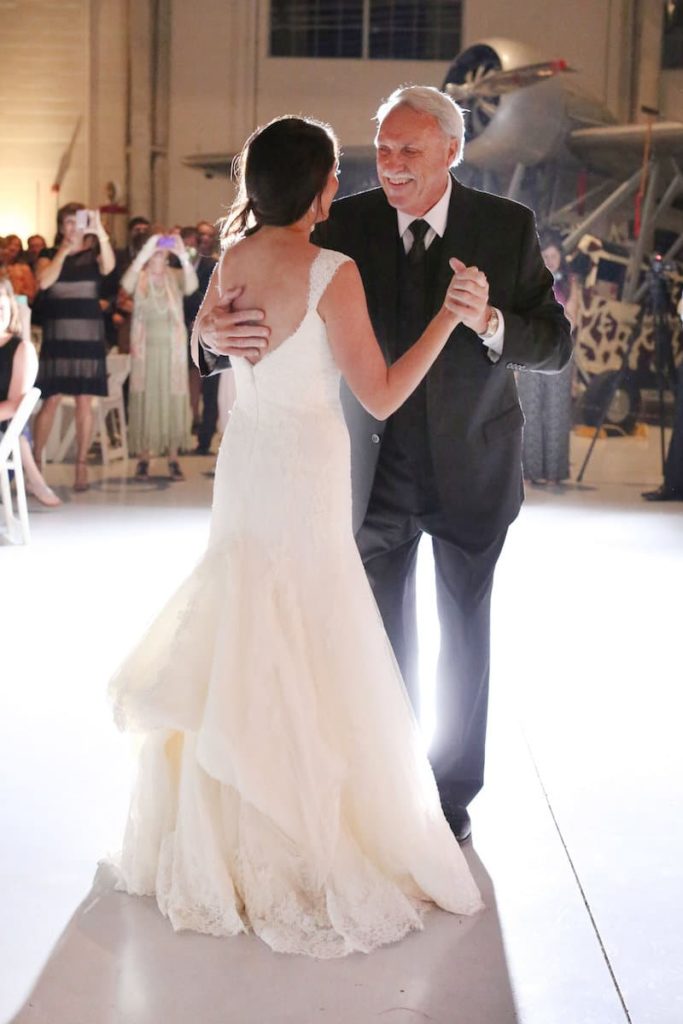
Jon Brown and his youngest daughter, Alison, celebrate her wedding to Ben Shipps at Fantasy of Flight in 2013. (Photo courtesy of Wings of Glory Photography)
Now a grandfather of five, Jon has taken all the grandchildren flying.
Hoping to keep the business in the family, he set out to teach his son-in-law Ben all aspects of running the seaplane base. As Ben became more familiar with the day-to-day operations, Jon started taking real vacations. He visited his friend, Cesare Baj, at the seaplane base in Cuomo, Italy.
“That’s the prettiest place in the world, and I’ve gotten to go to a lot of places. We flew into Milan direct from Miami. We saw Florence and Tuscany. They took me up in a seaplane, and it’s so close to the Swiss border that when you climb out, you see mountains everywhere,” Jon said.
Family Legacy
Last December, Ben became a designated pilot examiner. In January, Jon sold the business to Ben.
“Now, I’m like the substitute teacher,” Jon said. “He’s doing all the check rides, and when he needs me, he calls me.”
Ben declined to move into the office Jon and Jon’s father had used. Instead, he set up his workspace in a back room that had been used for storage of waterski gear.
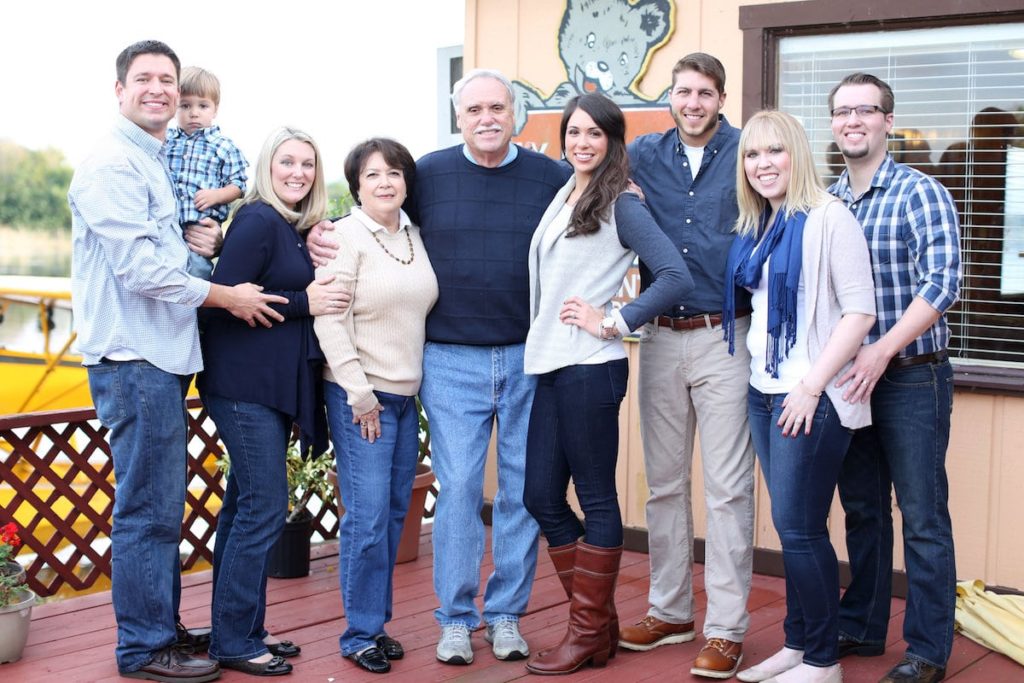
The Brown family at the seaplane base is shown from left to right: Josh Weber, Jon Weber, Meri Beth Weber, Frances Brown, Jon Brown, Alison Shipps, Ben Shipps, Emily Wilson, and Bryan Wilson. (Photo courtesy Wings of Glory Photography).
Though operating a seaplane base wasn’t the career Jon planned on, he has no regrets.
And now that he’s retired, he plans to knock off items on his “bucket list.” Like traveling more. Golfing. More fishing in Canada with friends. He wants to go to Iceland next year.
His wife Frances has been doing the bookkeeping two to three days a week, but now she’s training their daughter Alison to take over.
What I Fly
The Piper J-3 Cub on floats (N3470K).
“It’s our flagship,” he says. “It’s on all our apparel. But it’s been rebuilt so many times in 60 years, I’m not sure what’s still original on it.”
Why I Fly It
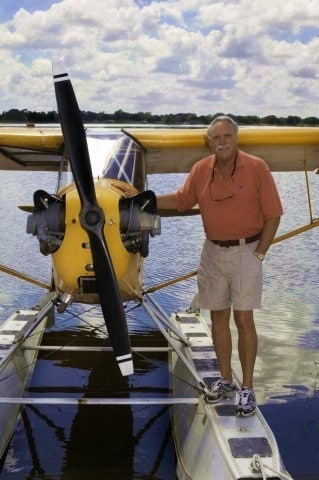
“My dad took me for a ride when I was 6 years old over Lakeland. I really wanted to go. I guess that’s what got me started. I enjoyed the flight. He became the operator at the Winter Haven airport, and I was just kind of thrown into it.”
Jon settled back into the desk chair his father once used. Surrounded by memorabilia from decades of teaching and from his father, he smiled.
“I started working out here at 12 years old as a line boy, and I’d fly with anybody that’d let me fly. Someone asked me the other day, ‘Who taught you to fly seaplanes?’ I said I don’t think anybody did. I just flew with Captain Lambert, who used to fly for dad, and some of these other fellows. I would ask them to fly with me for a while. So I learned to fly through a group
How I Fly It
“Primarily in the traffic pattern. Short flights. Occasionally a trip, but usually it’s with a student and not more than five miles from the airport.
“I do still enjoy cross-country flights in seaplanes. It’s like going out west in a covered wagon. You have an hour and a half of fuel available, so you’re going to meet a lot of people. I usually take cans of fuel in the floats and take off. Any time you see a good lake, you stop and go to the beach, and pour the fuel in, and away you go.”
“I told somebody not long ago that you never have to worry about a place to stay or a drink in the evening because people feel so sorry for you flying these little airplanes.”
Operating Costs Per 100 Hours
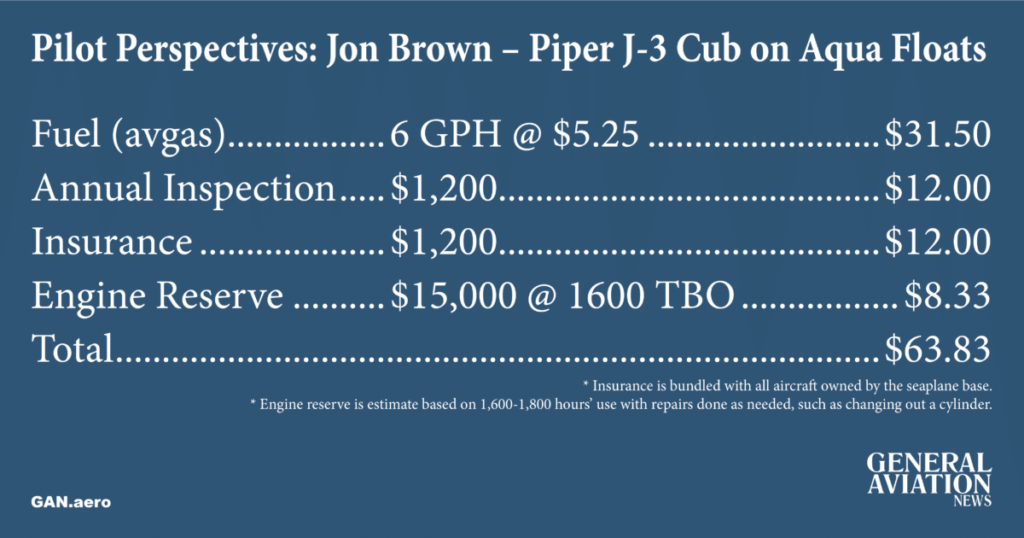
Flying Advice
“I would tell people, especially younger people who want to get into aviation, to do it. There’s a great need for pilots now. You can move up very quickly. If you want to be an airline pilot, dedicate yourself to it. I wouldn’t have said that 10 years ago, but there’s a lot of openings now. Pilots are retiring, making a lot of positions available.”
“Stay current. People call up here and ask if they can get their seaplane rating in a few days. I’m not really concerned about the licenses, I’m more concerned about you being current. Are you flying on a regular basis? So many accident reports I read show that people aren’t staying current.”
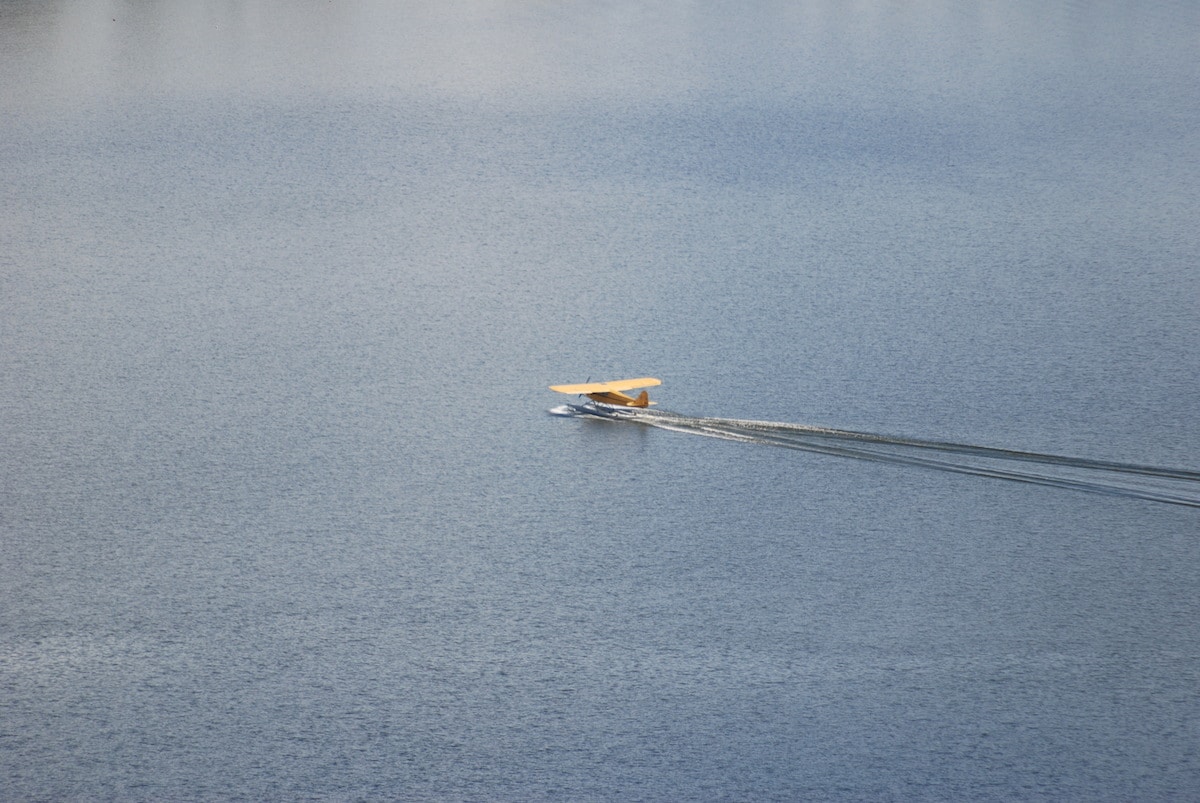
One of the seaplane base’s Piper Cubs landing on a lake in Winter Haven, Florida. (Photo by Joni M. Fisher.)
“The other advice I’d give is to stay within your limits and the aircraft’s limits. Use good judgment. They say that judgment is usually the result of experience, usually a bad experience. Appreciate the weather and don’t take chances.”
When asked how he wants to be remembered, Jon said, “As someone who had the chance to introduce floatplane flying to others.”
*Reprinted with permission from General Aviation News.
Article written by: Joni M. Fischer- Joni M. Fisher, an 800-hour instrument-rated private pilot, lives in Central Florida and Western North Carolina. She shares a Cessna 210 with four other pilots. She can be reached at JoniMFisher.com
